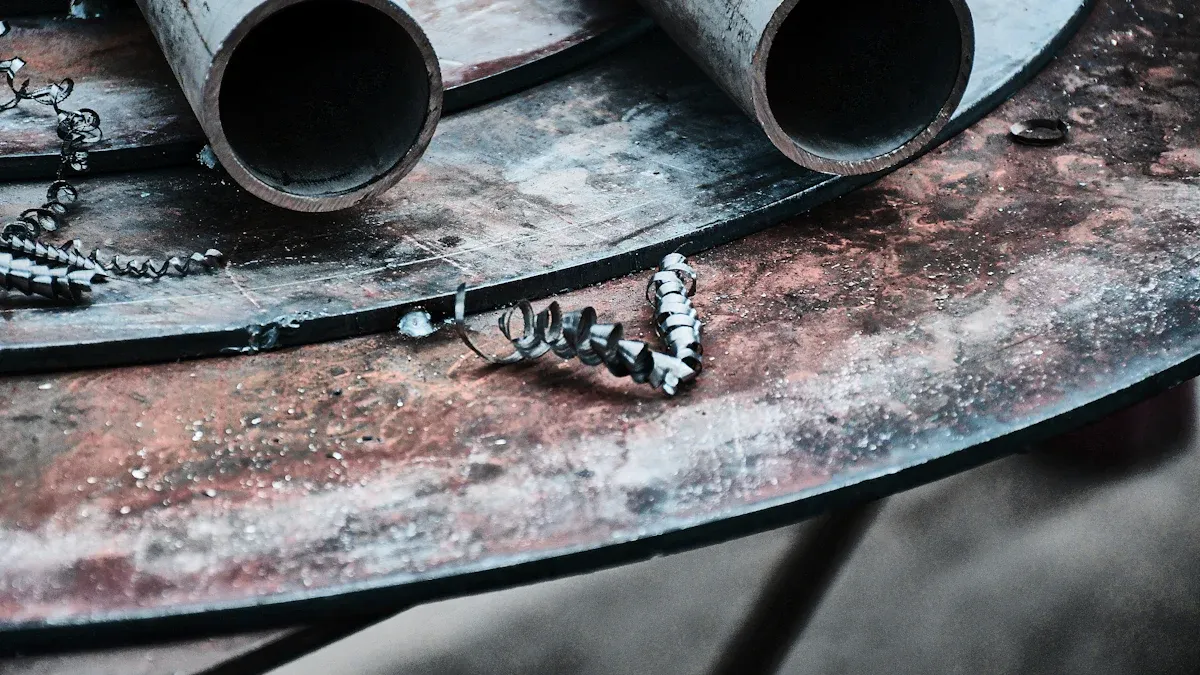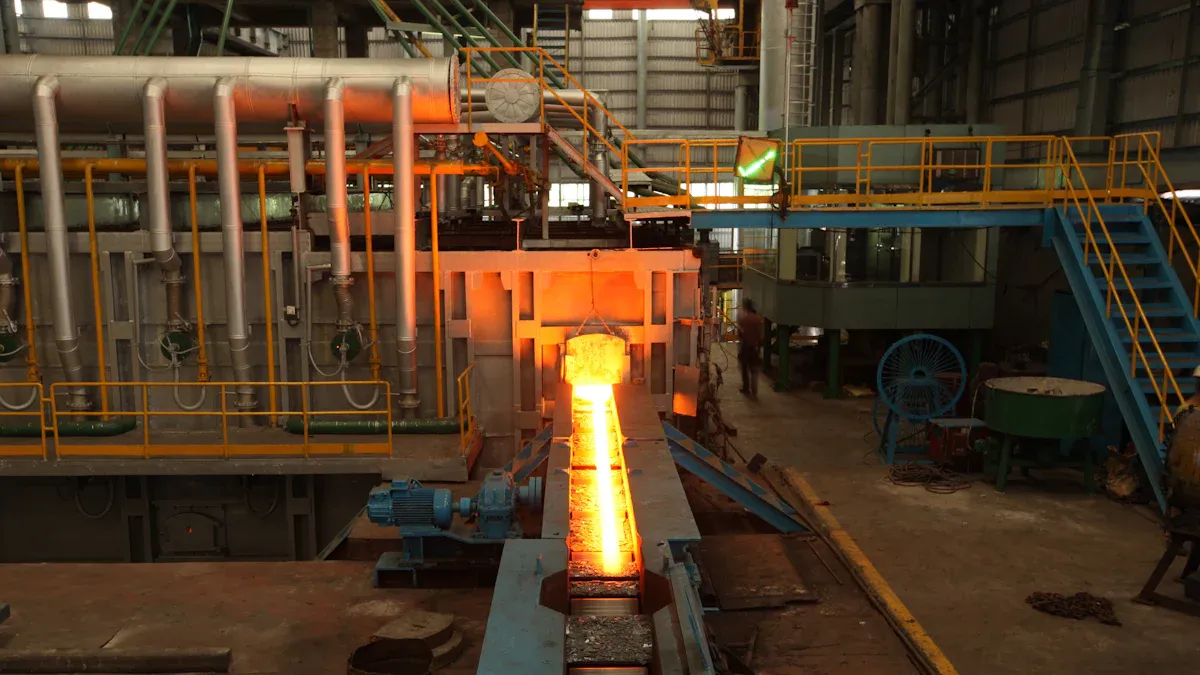
Tube high carbon anti-friction bearing steel tubes are used for strong bearings. Engineers pick these tubes because they are very tough and last long. The steel stays strong even in hard places. Makers use these tubes for machines that need to work well. The good material helps the tubes stay strong and not wear out. This makes them great for hard jobs. Tube high carbon anti-friction bearing steel tubes are better, stronger, and work well. They can handle the hardest jobs in factories.
Key Takeaways
-
Tube high carbon anti-friction bearing steel tubes are very strong. They are also very hard. This makes them great for tough jobs in factories and cars.
-
Seamless tube design gives even strength everywhere. There are no weak spots. The sizes are exact. This helps bearings last longer. It also helps them work better.
-
The special mix of carbon, chromium, and other elements makes the steel wear less. It also stops rust. This means less fixing is needed.
-
Advanced ways of making these tubes keep the steel clean and pure. The steel stays strong when it carries heavy things. It does not break under high stress.
-
These steel tubes help machines work well. They help cut down on machine stops. They also help save money on repairs in many industries.
Overview

Tube High Carbon Anti-Friction Bearing Steel Tubes
Tube high carbon anti-friction bearing steel tubes are important in factories today. Makers use these tubes to build strong bearings for machines. These machines work with heavy things and move fast. The tubes have a special mix that makes them different from other bearing materials. They have lots of carbon and chromium. This gives the steel great strength and helps it last longer. The seamless design means there are no weak spots in the tube. This makes them perfect for tough jobs.
Note: Seamless bearing seamless steel tubes have even hardness and strength. This helps stop cracks and breaks when the tube is working.
The table below shows the main features of tube high carbon anti-friction bearing steel tubes:
|
Characteristic |
Description |
|---|---|
|
Chemical Composition |
High carbon (about 0.9-1.05%), chromium (up to 1.6%), plus manganese, silicon, and more |
|
Microstructure |
Small carbides, clean look, strong against fatigue, keeps its shape |
|
Mechanical Properties |
High strength, up to 67 HRC hardness, stretches well |
|
Hardenability |
Hard all the way through up to about 1 inch thick |
|
Production |
Seamless, made hot or cold, follows world rules |
|
Quality Control |
Special melting steps make sure the inside is good |
|
Applications |
Used in cars and machines that need to be strong and last long |
Grades and Standards
Makers make bearing seamless steel tubes in many grades for different jobs. The most used grade is 52100, also called 100Cr6 or SUJ2. This steel has high strength, lasts long, and does not wear out easily. Other grades like 5195, 5090M, 1070M, and 5160 are made for special uses. Each grade follows strict world rules like ASTM A295, DIN 100Cr6, JIS SUJ2, EN31, and AMS 6440/6444.
-
Main grades are:
-
52100 (100Cr6, SUJ2, GCr15): Very hard, strong, and does not wear out
-
5195, 5090M: Different chromium and strength levels
-
1070M, 5160: Softer, bends more for flexible jobs
Seamless tubes are needed for bearing seamless steel pipes. This way, there are no weld lines that can be weak. So, high-carbon chromium bearing seamless steel tubes stay strong and work well. These tubes keep their size and thickness very close. This helps bearings shake less and make less noise. The seamless way of making them means every tube is strong, lasts long, and works well.
Tip: Picking high-carbon chromium bearing seamless steel pipe means it will last longer and need less fixing for important bearings.
Material Properties

Chemical Composition
Tube high carbon anti-friction bearing steel tubes have a special mix. This mix makes them different from other bearing materials. Grade 52100 is the main choice for strong and tough bearings. This steel has just the right mix of elements. These elements help the steel last long and not get tired or break. The table below shows what is in 52100:
|
Element |
Content (%) |
|---|---|
|
Iron (Fe) |
|
|
Chromium |
1.30 - 1.60 |
|
Carbon |
0.98 - 1.10 |
|
Manganese |
0.25 - 0.45 |
|
Silicon |
0.15 - 0.30 |
|
Sulfur |
≤ 0.025 |
|
Phosphorus |
≤ 0.025 |
Chromium and carbon are the most important parts. High carbon makes the steel very strong and hard. Chromium helps the steel fight rust and not wear out. Manganese and silicon make the steel tougher and more stable. This careful mix is why 52100 and similar grades are picked for strong bearings.
Other grades like 5195, 5090M, 1070M, and 5160 change the carbon and chromium amounts. This helps them fit different jobs. More carbon means more strength and wear resistance, but less bending. Less carbon means the steel can bend more, but is not as strong.
Note: The right mix of elements helps the steel hold heavy things, move fast, and work in hard places without losing its shape or power.
Mechanical Strength
Tube high carbon anti-friction bearing steel tubes are very strong. Grade 52100 can take about 325,000 psi before breaking. It can also handle about 295,000 psi before it bends. These numbers show how much force the steel can take. The steel can stretch at least 12% before it snaps. Its Rockwell hardness is between 60 and 67 HRC. This means it is very hard and does not wear out fast.
The table below shows how different steel grades compare:
|
Steel Grade |
Carbon Content (%) |
Tensile Strength (psi) |
Yield Strength (psi) |
Elongation (%) |
Rockwell Hardness (HRC) |
|---|---|---|---|---|---|
|
52100 |
0.98 - 1.10 |
~325,000 |
~295,000 |
≥12 |
60 - 67 |
|
5195 |
0.95 |
~310,000 |
~280,000 |
≥13 |
58 - 65 |
|
1070M |
0.70 |
~250,000 |
~220,000 |
≥15 |
50 - 58 |
|
|
